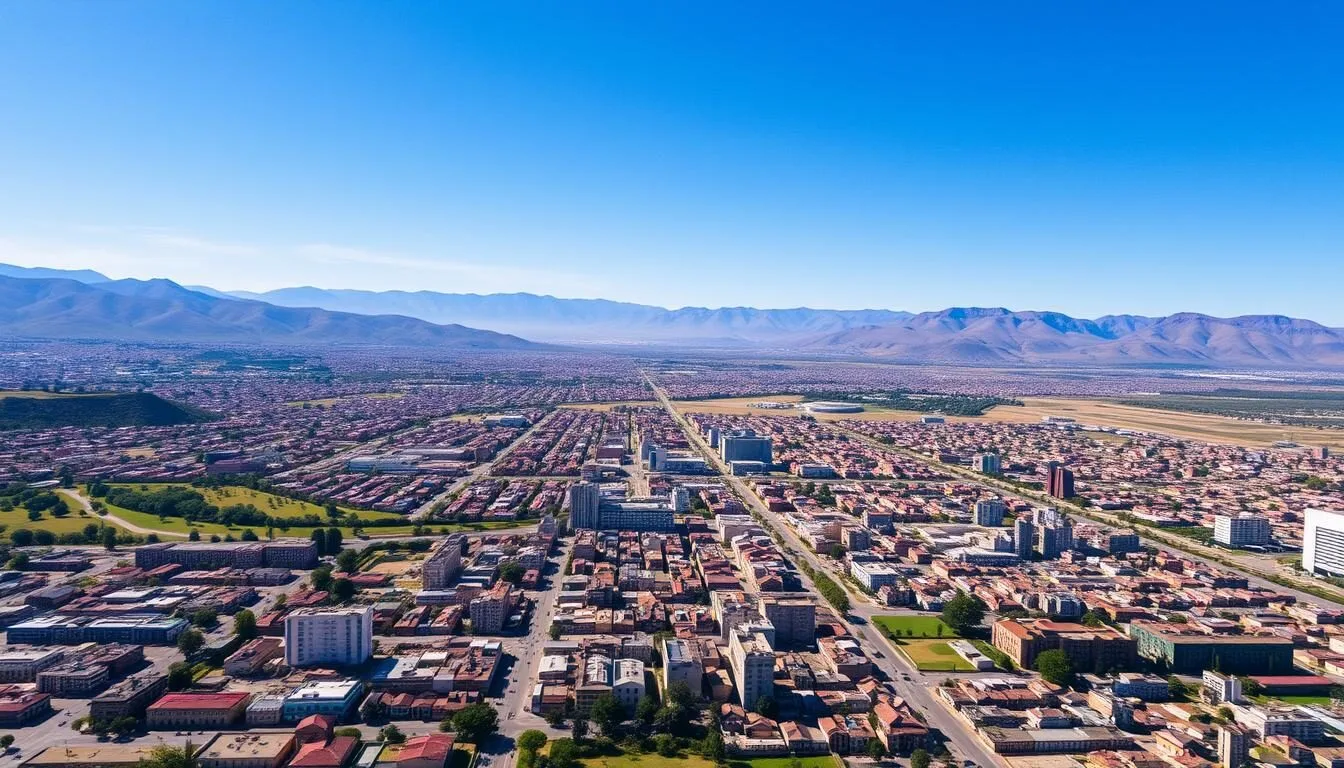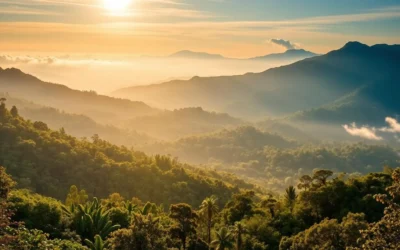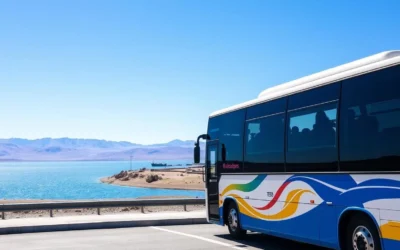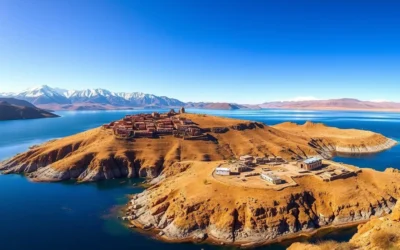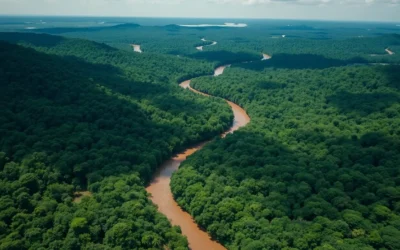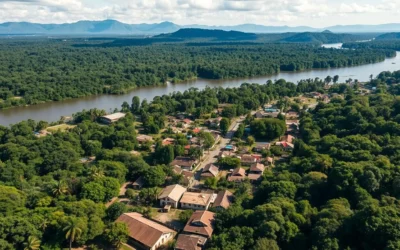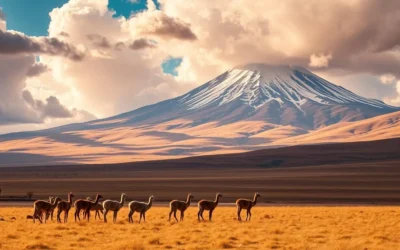Did you know that Cochabamba is home to Cristo de la Concordia, the second-largest Jesus statue in the world at 34 meters (112 feet) tall? This impressive monument is just one of many hidden gems in Bolivia’s “City of Eternal Spring,” a destination often overlooked by travelers rushing between La Paz and Uyuni. With its pleasant climate, rich culinary traditions, and stunning natural surroundings, Cochabamba offers an authentic Bolivian experience away from the typical tourist trail.
Getting to Cochabamba & Planning Your Journey
As Bolivia’s fourth-largest city, Cochabamba is well-connected to other major destinations within the country. Located in central Bolivia at an altitude of 2,570 meters (8,430 feet), it’s significantly lower than La Paz or Potosí, making it a good place to acclimatize if you’re sensitive to altitude.
By Air
The fastest way to reach Cochabamba is by flying into Jorge Wilstermann International Airport. Regular flights connect from La Paz (45 minutes), Santa Cruz (40 minutes), and Sucre (40 minutes). Domestic airlines like Boliviana de Aviación (BoA) offer affordable flights ranging from 200-320 BOB (approximately $30-48 USD) one-way.
Find the Best Flight Deals to Cochabamba
Compare prices from multiple airlines and book your tickets in advance for the best rates.
By Bus
Buses are the most economical option for reaching Cochabamba. Regular services operate from major Bolivian cities:
- From La Paz: 8-hour journey, approximately 120 BOB ($18 USD)
- From Santa Cruz: 10-hour journey, approximately 142 BOB ($21 USD)
- From Sucre: 8-hour journey, approximately 130 BOB ($20 USD)
- From Uyuni: 11-hour overnight journey, approximately 145 BOB ($22 USD)
Bus tickets can be purchased directly at the terminal or through online platforms. It’s advisable to buy tickets at least one day in advance, especially during peak travel seasons, as buses do sell out.
Best Time to Visit Cochabamba & Weather Tips
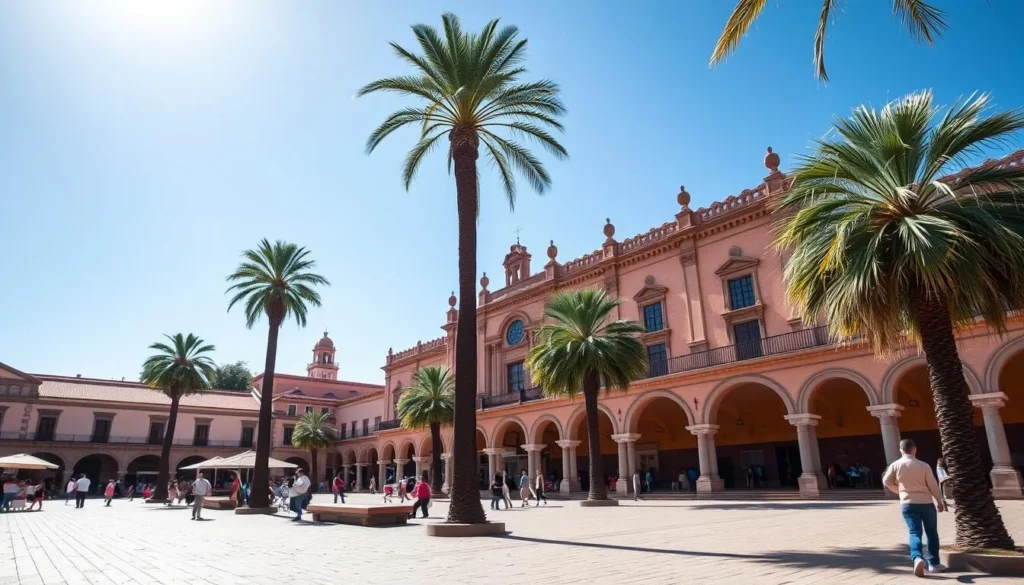
Cochabamba is known as “The City of Eternal Spring” due to its pleasant year-round climate. However, certain seasons offer better conditions for exploring the city and surrounding areas.
Recommended Months to Visit
April to October (Dry Season)
- Clear, sunny days with minimal rainfall
- Daytime temperatures around 22-25°C (72-77°F)
- Cool evenings around 10-12°C (50-54°F)
- Ideal for hiking in Tunari National Park
- Best visibility for panoramic views from Cristo de la Concordia
Months to Avoid
- December to February (Rainy Season)
- Heavy afternoon showers can disrupt outdoor activities
- Trails in Tunari National Park may be muddy and slippery
- Reduced visibility from Cristo de la Concordia viewpoint
- Some rural roads may become difficult to navigate
If you’re planning to visit during the shoulder seasons (March/November), pack layers as weather can be variable. Even during the dry season, bring a light jacket for cool evenings and early mornings.
Getting Around Cochabamba
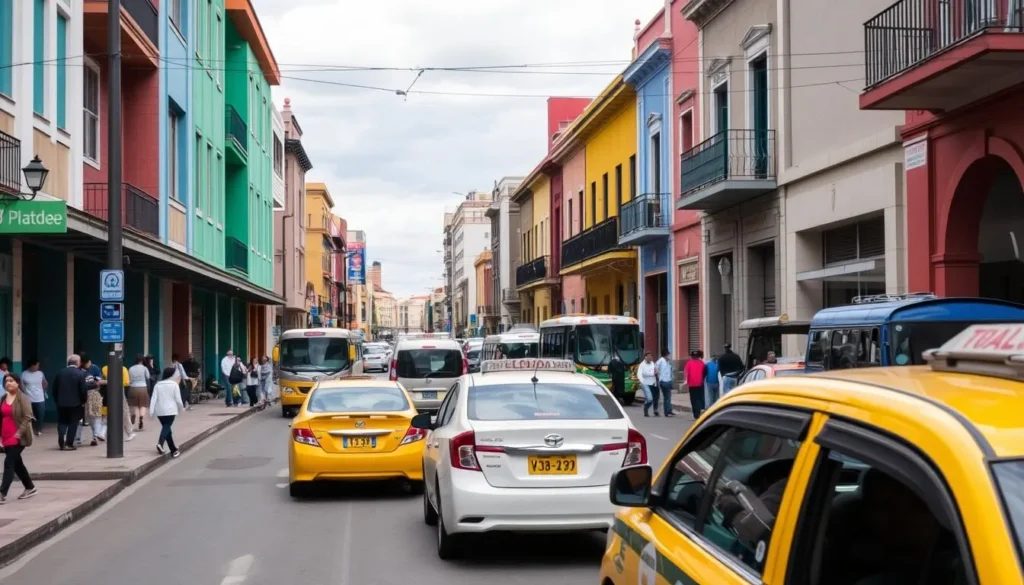
Navigating Cochabamba is relatively straightforward, with several affordable transportation options available to visitors.
Public Transportation
Microbuses (small vans) and trufis (shared taxis that follow fixed routes) are the main forms of public transportation in Cochabamba. Fares are very affordable, typically costing 2-3 BOB ($0.30-0.45 USD) per ride. Look for route numbers displayed on the windshield.
Taxis
Taxis are plentiful and inexpensive in Cochabamba. A ride within the city center typically costs 10-15 BOB ($1.50-2.25 USD). For safety, use radio taxis (identifiable by their company logos) or ask your accommodation to call one for you. Uber has limited availability in Cochabamba.
Rental Cars
If you plan to explore the surrounding areas independently, renting a car gives you the most flexibility. Several rental agencies operate in Cochabamba, with prices starting around 250 BOB ($37 USD) per day for a basic vehicle.
Explore Cochabamba at Your Own Pace
Rent a car to discover hidden gems in and around Cochabamba with complete freedom.
Walking
The city center is compact and pedestrian-friendly, making walking an excellent option for exploring attractions like Plaza 14 de Septiembre and the surrounding colonial buildings. For longer distances or visiting Cristo de la Concordia, you’ll need to use other transportation options.
Where to Stay in Cochabamba
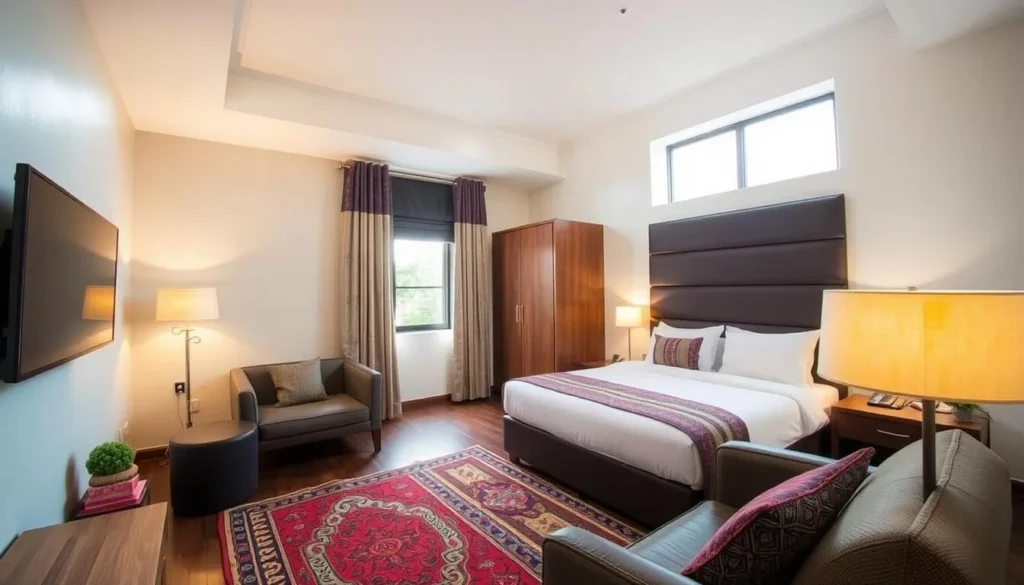
Cochabamba offers a range of accommodation options to suit different budgets and preferences. Most visitors choose to stay in the city center for easy access to attractions, restaurants, and transportation.
Budget Options
Backpackers and budget travelers will find several affordable hostels in Cochabamba. Running Chaski Hostel is highly recommended for its central location, cleanliness, and helpful staff. Dormitory beds start around 60 BOB ($9 USD) per night, while private rooms range from 140-210 BOB ($21-32 USD).
Mid-Range Hotels
For those seeking more comfort without breaking the bank, Cochabamba offers excellent mid-range options. Residencial Moroni and Hotel Monserrat provide comfortable rooms, private bathrooms, and often include breakfast. Expect to pay between 170-350 BOB ($25-53 USD) per night.
Luxury Accommodations
If you prefer upscale accommodations, Hotel Catena and Gran Hotel Cochabamba offer premium amenities including swimming pools, on-site restaurants, and elegant rooms. Rates typically range from 530-800 BOB ($80-120 USD) per night.
Find Your Perfect Stay in Cochabamba
Compare prices and book your accommodation in advance to secure the best deals.
Whichever option you choose, staying near Plaza 14 de Septiembre puts you within walking distance of many attractions, restaurants, and shops. For a quieter experience, consider accommodations in the Queru Queru or Cala Cala neighborhoods.
Dining & Local Cuisine in Cochabamba
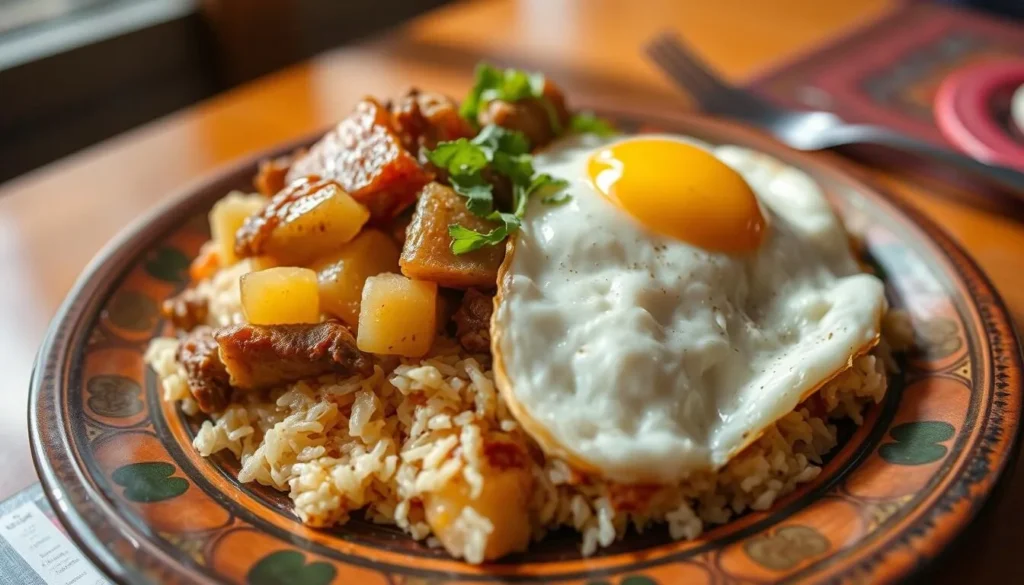
Known as Bolivia’s gastronomic capital, Cochabamba offers some of the country’s best culinary experiences. The city’s fertile valley provides fresh ingredients that form the basis of traditional Bolivian dishes with a local twist.
Must-Try Local Dishes
- Silpancho – A hearty dish consisting of a thin, breaded beef cutlet served over rice and potatoes, topped with a fried egg and pico de gallo salsa
- Pique Macho – A massive plate of beef chunks, sausages, french fries, boiled eggs, and vegetables in a spicy sauce
- Anticuchos – Grilled beef heart skewers served with potatoes and a spicy peanut sauce
- Salteñas – Savory pastries filled with meat, vegetables, and a slightly sweet, soupy filling
- Chicha – A traditional fermented corn beverage (alcoholic version available)
Where to Eat
Cochabamba offers dining options for every budget and preference:
Local Eateries
For authentic Bolivian cuisine at affordable prices, head to Bohemia restaurant to try local Chuquisaqueñan food. These establishments typically serve set lunch menus (almuerzos) for 15-25 BOB ($2.25-3.75 USD).
Mid-Range Restaurants
Da Vinci Pizzeria offers excellent Italian cuisine, while Mad Mex serves some of the best Mexican food in Bolivia. Expect to pay 40-70 BOB ($6-10.50 USD) per person.
Special Experience
For a memorable dining experience with a view, visit Patrimonio restaurant near Cristo de la Concordia. While the main dishes receive mixed reviews, their cheesecake and cocktails are highly recommended.
Local Beverages
Don’t miss trying api con pastel, a traditional Cochabamba treat consisting of a warm, sweet corn-based drink (available in purple, green, or white varieties) served with fried pastry sprinkled with powdered sugar. It’s commonly sold by street vendors in the morning and makes for a delicious breakfast.
Top Attractions & Sightseeing in Cochabamba
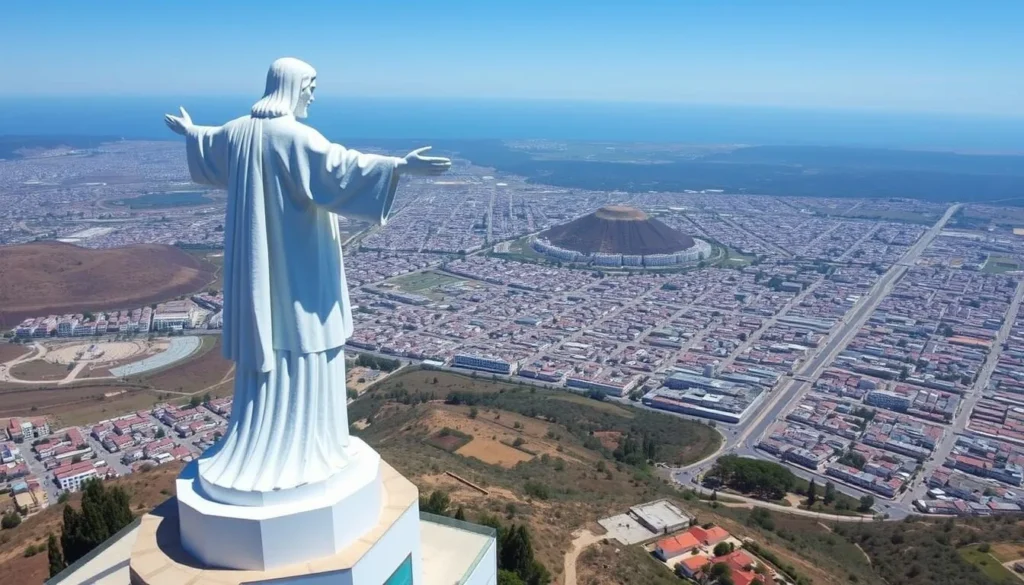
Cochabamba offers a diverse range of attractions, from impressive monuments to historical sites and natural wonders. Here are the must-see sights during your visit:
Cristo de la Concordia
Standing proudly on San Pedro Hill, this 34-meter (112-foot) statue of Jesus Christ is the second-largest of its kind in the world, even taller than Rio de Janeiro’s famous Christ the Redeemer. Beyond the impressive monument, the site offers spectacular panoramic views of Cochabamba and the surrounding mountains.
To reach the statue, you have three options:
- Cable Car – The most scenic option, costing 30 BOB ($4.50 USD) for a round trip from Parque de la Autonomía
- Taxi – A convenient alternative, costing around 20 BOB ($3 USD) from the city center
- Walking – Not recommended due to safety concerns
Experience Cochabamba’s Top Attractions
Book guided tours to make the most of your visit to Cristo de la Concordia and other landmarks.
Plaza 14 de Septiembre
Cochabamba’s main square is the heart of the city, surrounded by colonial buildings and bustling with local life. Enjoy people-watching, feed the pigeons (bird seed available from vendors), or get your shoes polished while reading the newspaper – a charming old-fashioned experience that’s part of local culture.
Basilica de San Sebastian
Located on Plaza 14 de Septiembre, this beautiful cathedral blends Spanish Baroque and indigenous Bolivian architectural styles. The interior features an impressive golden altar worth seeing. The cathedral is open daily from 8:00 a.m. to 8:00 p.m., except Tuesdays and Sundays when it closes at 1:30 p.m. Entrance is free.
La Cancha Market
One of South America’s largest open-air markets, La Cancha offers everything from fresh produce and traditional textiles to electronics and souvenirs. It’s a bustling, authentic experience that provides insight into local life. The market is located about a 20-minute walk from Plaza 14 de Septiembre. Be mindful of your belongings in crowded areas.
Palacio Portales
This early 20th-century mansion was built by Simon Iturri Patino, once one of the wealthiest men in the world. The eclectic architecture features rooms inspired by Italian, French, and Arabic styles. The surrounding gardens are among Bolivia’s most beautiful, with exotic plants and trees. Guided tours cost 20 BOB ($3 USD) and last approximately 45 minutes.
Museo Convento Santa Teresa
This baroque-style convent and museum offers a glimpse into colonial religious life. Located near Plaza 14 de Septiembre, it houses an impressive collection of religious art and artifacts. Entrance costs 25 BOB ($3.75 USD) for foreigners, with guided tours starting at 9:00, 10:00, and 11:00 a.m., and 2:30, 3:30, and 4:30 p.m.
Outdoor Adventures & Natural Attractions
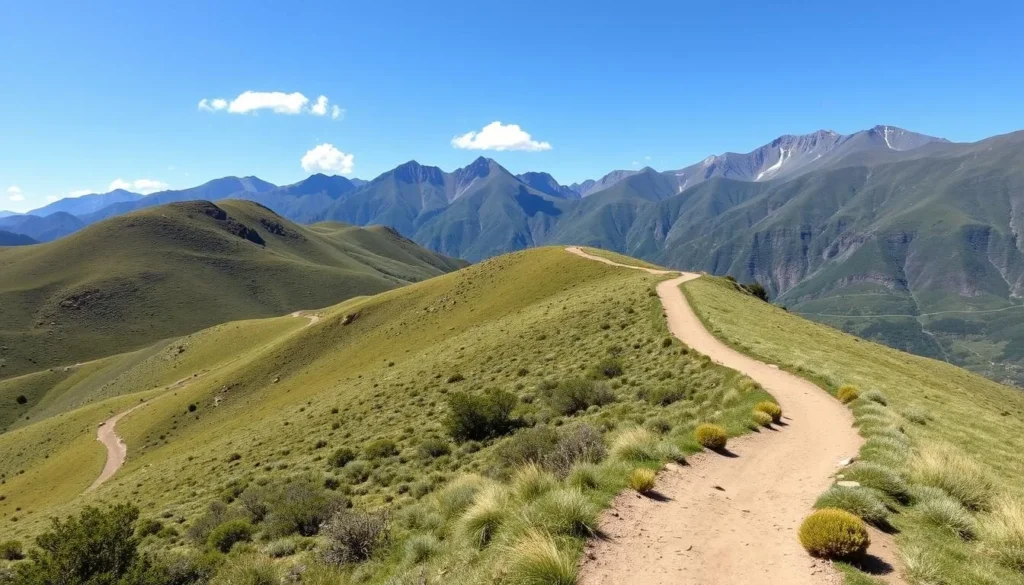
The areas surrounding Cochabamba offer excellent opportunities for outdoor enthusiasts, with two national parks within easy reach of the city.
Tunari National Park
Just north of Cochabamba, Tunari National Park is dominated by the impressive Cerro Tunari, which rises to 5,035 meters (16,516 feet). The park offers excellent hiking opportunities through beautiful valleys, with trails leading to waterfalls and providing spectacular mountain views.
Popular activities in the park include:
- Hiking to the summit of Cerro Tunari (requires acclimatization)
- Exploring the park’s diverse ecosystems
- Birdwatching for Andean species
- Visiting mountain lakes and waterfalls
Tours to Tunari National Park can be arranged through most hotels and hostels in Cochabamba, with options ranging from day hikes to multi-day adventures.
Torotoro National Park
Located about a 3-hour drive from Cochabamba, Torotoro National Park is a geological and paleontological wonder. The park features deep canyons, extensive cave systems, and one of the highest concentrations of dinosaur footprints in South America.
Highlights of Torotoro include:
- El Vergel Canyon, with its 300-meter (984-foot) deep gorge
- Umajalanta Cave, Bolivia’s largest explored cave system
- Ancient dinosaur footprints preserved in stone
- Spectacular waterfalls and natural swimming pools
A visit to Torotoro typically requires at least two days. Tours can be arranged in Cochabamba through agencies like Vision Tours Bolivia, with prices ranging from 530-590 BOB ($80-89 USD) per person for a group tour.
Villa Tunari
For a tropical experience, head to Villa Tunari, a small jungle town about a 3-hour drive from Cochabamba. The area offers hiking opportunities through lush forests where you can spot monkeys, colorful birds, and exotic plants. The town is also known for its excellent fresh-grilled river trout served at local restaurants.
Discover Cochabamba’s Natural Wonders
Book guided tours to Tunari or Torotoro National Parks for an unforgettable outdoor adventure.
Cultural Experiences & Festivals
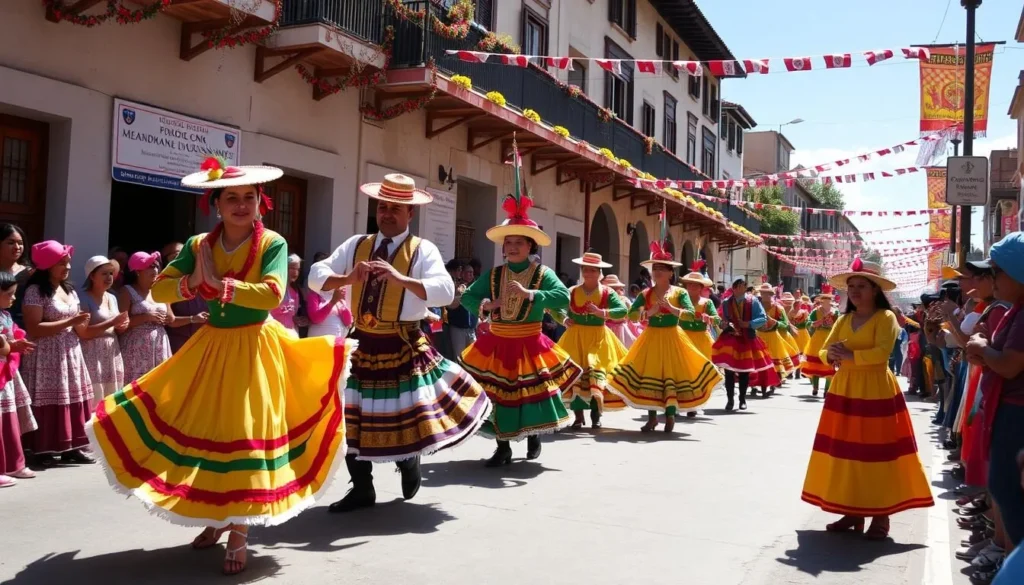
Cochabamba offers rich cultural experiences that provide insight into Bolivian traditions and way of life.
Parque de la Familia
This family-oriented park features beautiful gardens, interactive fountains, and an impressive music-backed light show in the evenings. Located about a 20-minute walk from Plaza 14 de Septiembre, it’s a popular spot for locals and visitors alike. The entrance fee is just 8 BOB ($1.20 USD), and the park is open daily from 2:00 p.m. to 10:00 p.m.
Local Festivals
If your visit coincides with a local festival, you’re in for a treat. Some notable celebrations include:
- Urkupiña Festival (August 14-16) – One of Bolivia’s most important religious and cultural celebrations, featuring colorful parades, traditional dances, and music
- Carnival (February/March) – While not as famous as Oruro’s carnival, Cochabamba’s celebration features water fights, parades, and festive street parties
- Independence Day (August 6) – Commemorates Bolivia’s independence with parades and cultural events
Themed Cafés
For a unique cultural experience, visit Westeros Café, a Game of Thrones-themed establishment where you can sit on the Iron Throne while enjoying coffee and pastries. While slightly more expensive than other cafés in the city, it offers a fun experience for fans of the series.
Practical Travel Tips
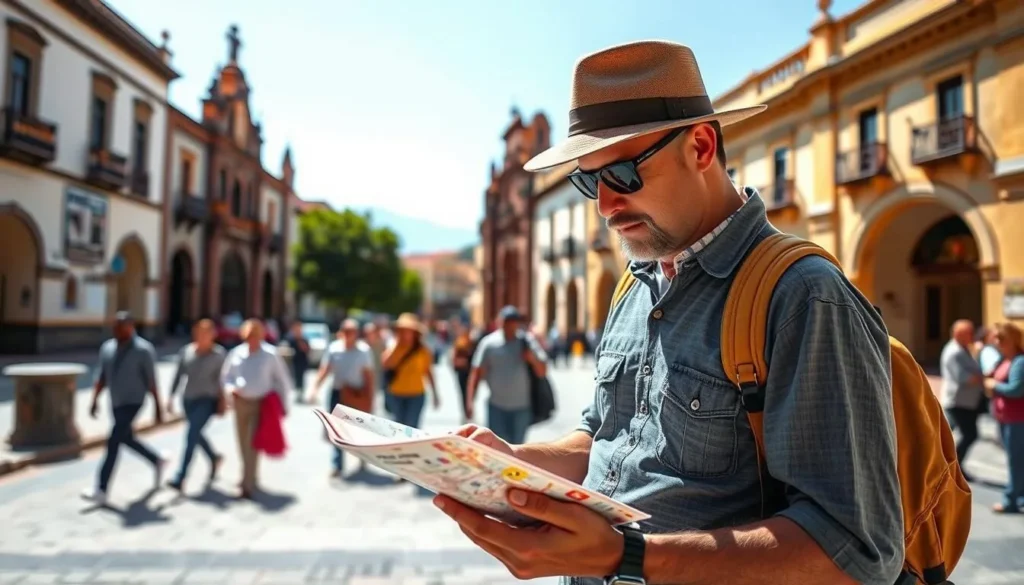
Money & Costs
The Bolivian currency is the Boliviano (BOB). ATMs are available in the city center, with Banco Union offering fee-free withdrawals. Cochabamba is an affordable destination by international standards:
- Budget travelers can get by on 280-350 BOB ($42-53 USD) per day
- Mid-range travelers should budget 420-700 BOB ($63-105 USD) per day
- Luxury travelers can expect to spend 700-1,200 BOB ($105-180 USD) per day
Credit cards are accepted at higher-end establishments, but cash is preferred for smaller businesses and markets.
Safety
Cochabamba is generally safe for tourists, but take standard precautions:
- Avoid displaying valuable items, especially in crowded areas like La Cancha market
- Use official radio taxis rather than hailing them on the street
- Don’t walk alone at night in unfamiliar areas
- Keep a photocopy of your passport and store the original in your hotel safe
Altitude Considerations
At 2,570 meters (8,430 feet), Cochabamba sits at a moderate altitude. Most travelers don’t experience significant altitude sickness here, making it a good place to acclimatize before visiting higher-altitude Bolivian destinations like La Paz or Potosí. Stay hydrated and avoid strenuous activities during your first day.
Language
Spanish is the primary language in Cochabamba, with Quechua also widely spoken. English is not commonly spoken outside of tourist establishments, so learning basic Spanish phrases will enhance your experience. Locals appreciate visitors who make an effort to communicate in Spanish.
Suggested Itineraries for Cochabamba
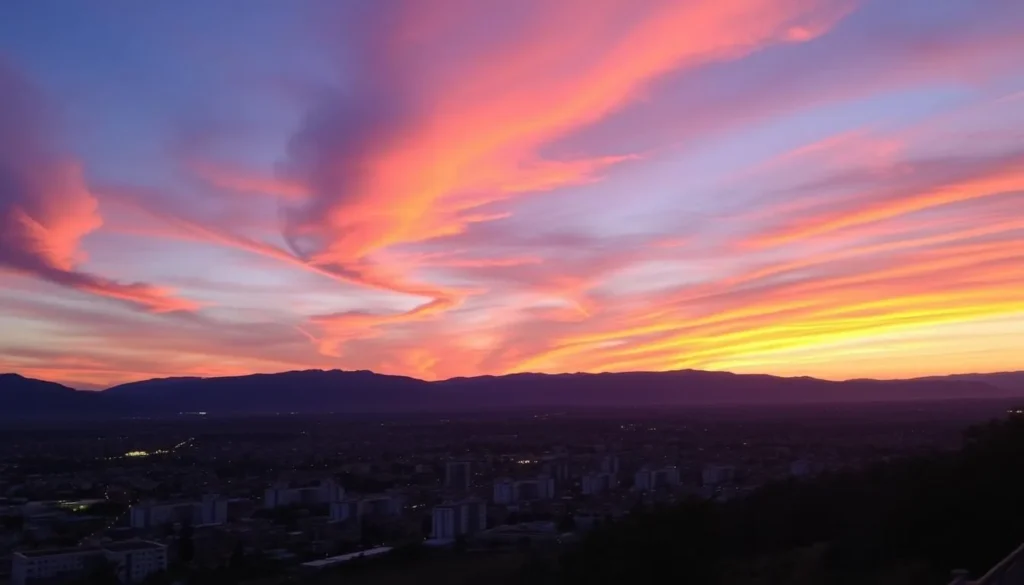
3-Day Itinerary
Day 1: City Exploration
- Morning: Visit Plaza 14 de Septiembre and Basilica de San Sebastian
- Lunch: Try silpancho at a local restaurant near the plaza
- Afternoon: Take the cable car to Cristo de la Concordia for panoramic views
- Evening: Enjoy the light and water show at Parque de la Familia
Day 2: Cultural Immersion
- Morning: Explore La Cancha Market
- Lunch: Sample street food at the market
- Afternoon: Visit Palacio Portales and its gardens
- Evening: Dinner at a recommended restaurant like Mad Mex or Da Vinci Pizzeria
Day 3: Natural Surroundings
- Morning: Half-day hike in Tunari National Park
- Lunch: Picnic in the park or return to the city
- Afternoon: Visit Museo Convento Santa Teresa
- Evening: Farewell dinner with local specialties
5-Day Extension
- Days 4-5: Overnight trip to Torotoro National Park to see dinosaur footprints, caves, and canyons
- Alternative: Day trip to Villa Tunari for jungle hiking and fresh river trout
Experience the Authentic Bolivia in Cochabamba
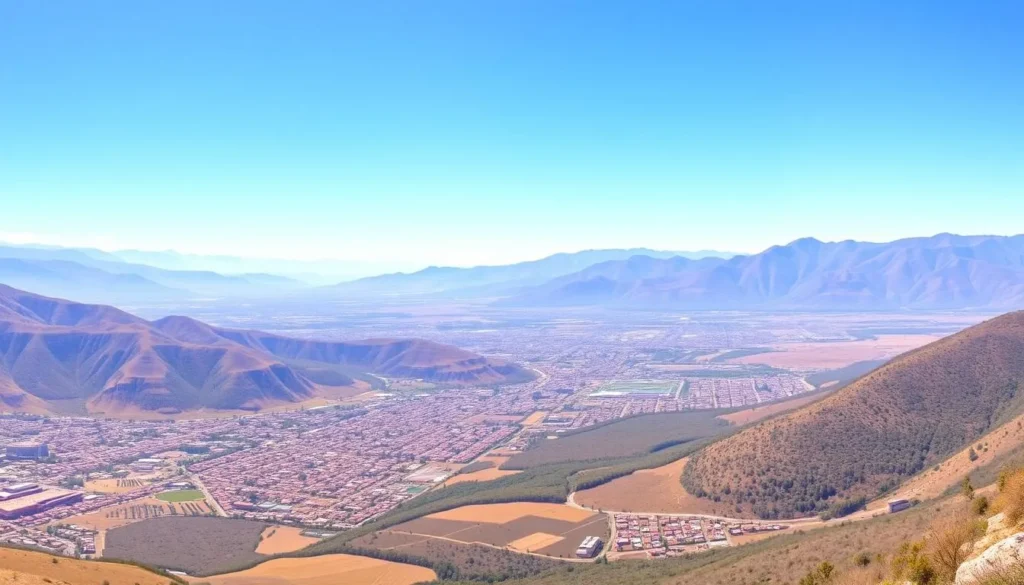
Cochabamba offers travelers a perfect blend of cultural richness, natural beauty, and authentic Bolivian experiences away from the typical tourist trail. From standing beneath the impressive Cristo de la Concordia to savoring the country’s best cuisine, exploring ancient dinosaur tracks, or hiking through diverse landscapes, this “City of Eternal Spring” rewards those who take the time to discover its charms.
Whether you’re using Cochabamba as a base to acclimatize before heading to higher-altitude Bolivian destinations or making it a destination in its own right, you’ll find a welcoming city with plenty to offer. Take your time, interact with the friendly locals, and discover why Cochabamba deserves a spot on your Bolivian itinerary.
Ready to Explore Cochabamba?
Start planning your Bolivian adventure today with these essential travel resources.
The above is subject to change.
Check back often to TRAVEL.COM for the latest travel tips and deals.
